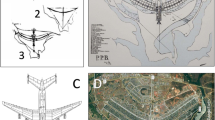Abstract
In the paper [1], the spatial duopoly of firms under Stackelberg competition in which one of the firms is the leader, both by the volume of goods supply and location, was studied. In this paper, we consider the case of leadership only by the volume of goods supply. The Stackelberg-Nash equilibrium in the quantity and spatial strategies of firms are found. In the course of stability analysis of this equilibrium, it is proved that the transport tariff is a bifurcation parameter for firms. It is established that the change of the central agglomeration strategy into the differentiation strategy occurs at the point of transcritical bifurcation. The conditions for full coverage of the markets for both strategies are determined. As is demonstrated below, the Stackelberg information asymmetry leads to the asymmetry of equilibrium locations of firms.
Similar content being viewed by others
References
Torbenko, A., The Linear City Model with Exogenous Stackelberg Competition, Mat. Teor. Igr Pril., 2013, vol. 5, no. 2, pp. 64–81.
Anderson, S. and Neven, D., Cournot Competition Yields Spatial Agglomeration, Int. Econom. Rev., 1991, vol. 32, no. 4, pp. 793–808.
Bhadury, J., Chandrasekaran, R., and Padmanabhan, V., Competitive Location and Entry Deterrence in Hotelling’s Duopoly Model, Location Sci., 1994, vol. 2, no. 4, pp. 259–275.
Brenner, S., Hotelling Games with Three, Four, and More Players, J. Regional Sci., 2005, vol. 45, no. 4, pp. 851–864.
D’Amato, E., Mallozzi, L., and Pardalos, P.M., Sequential Entry in Hotelling Model with Location Costs: A Three-Firm Case, in Spatial Interaction Models: Facility Location Using Game Theory, New York: Springer, 2017, pp. 261–272.
D’Aspremont, C., Gabszewicz, J., and Thisse, J.-F., On Hotelling’s “Stability in Competition,” Econometrica, 1979, vol. 47, no. 5, pp. 1145–1150.
Economides, N., Minimal and Maximal Product Differentiation in Hotelling’s Duopoly, Econ. Letters, 1986, vol. 21, pp. 67–71.
Gupta, B., Pal, D., and Sarkar, J., Spatial Cournot Competition and Agglomeration in a Model of Location Choice, Regional Sci. Urban Econom., 1997, vol. 27, no. 3, pp. 261–282.
Hamilton, J., Thisse, J.-F., and Weskamp, A., Spatial Discrimination, Bertrand vs. Cournot in a Model of Location Choice, Regional Sci. Urban Econom., 1989, vol. 19, pp. 87–102.
Hamilton, J.H., Klein, J.F., Sheshinski, E., and Slutsky, S.M., Quantity Competition in a Spatial Model, Canadian J. Econom., 1994, vol. 27, pp. 903–917.
Hotelling, H., Stability in Competition, Econom. J., 1929, vol. 39, no. 153, pp. 41–57.
Irmen, A. and Thisse, J.-F., Competition in Multi-Characteristics Spaces: Hotelling Was Almost Right, J. Econom. Theory, 1998, vol. 78, no. 1, pp. 76–102.
Mazalov, V. and Sakaguchi, M., Location Game on the Plane, Int. Game Theory Rev., 2003, vol. 5, no. 1, pp. 13–25.
Neven, D., On Hotelling’s Competition with Non-uniform Consumer Distribution, Econom. Letters, 1986, vol. 21, pp. 121–126.
Prescott, E.C. and Visscher, M., Sequential Location among Firms with Foresight, Bell J. Econom., 1977, vol. 8, pp. 378–393.
Author information
Authors and Affiliations
Corresponding author
Additional information
Russian Text © The Author(s), 2018, published in Matematicheskaya Teoriya Igr i ee Prilozheniya, 2018, No. 2, pp. 27–39.
Rights and permissions
About this article
Cite this article
Melnikov, S.V. Stackelberg-Nash Equilibrium in the Linear City Model. Autom Remote Control 81, 358–365 (2020). https://doi.org/10.1134/S0005117920020137
Received:
Revised:
Accepted:
Published:
Issue Date:
DOI: https://doi.org/10.1134/S0005117920020137




